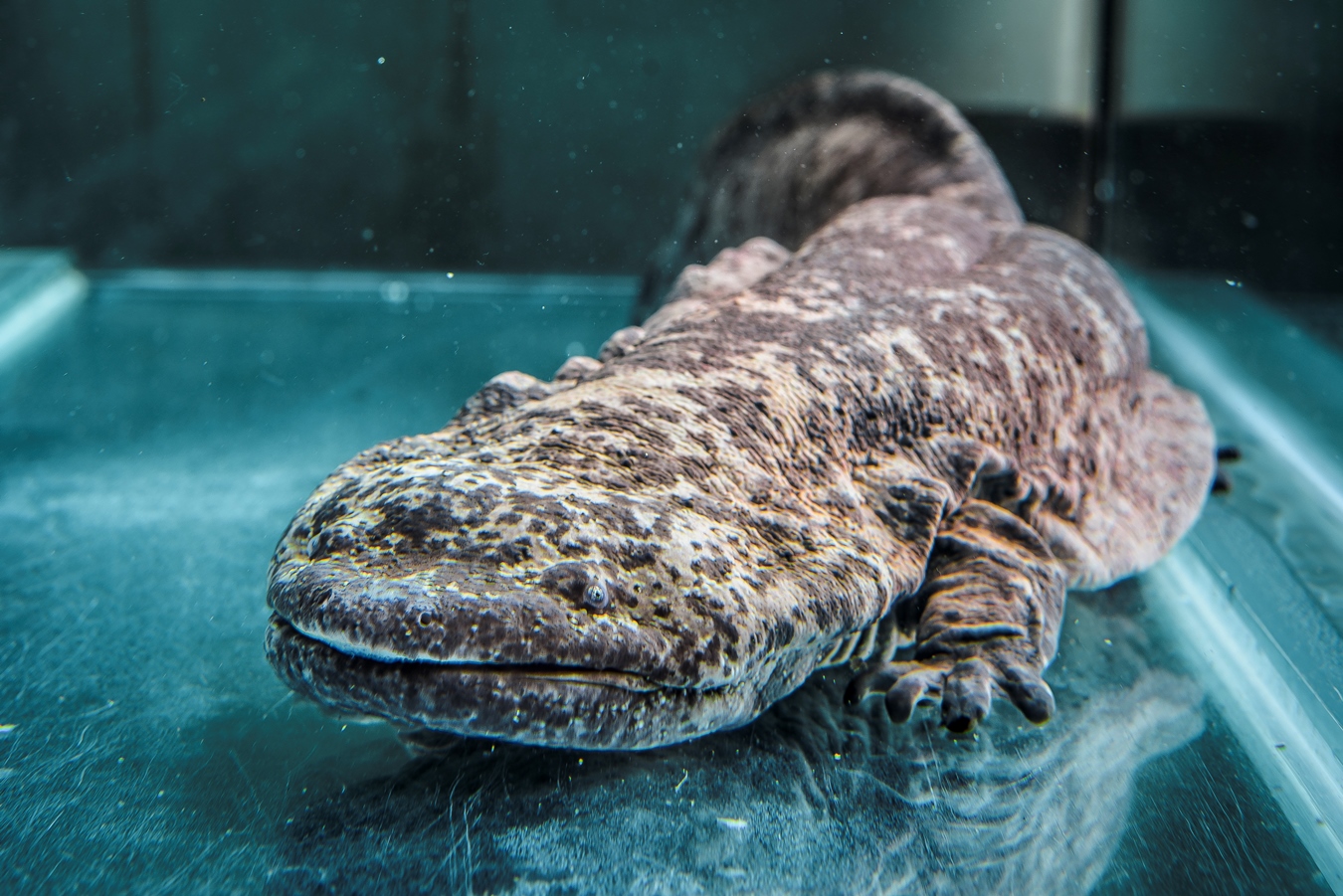Giant salamanders and giant salamanders products are in use for medical purpose in many countries across the Indian ocean. Stories about this animal were gathered and written by students. They are all part of a pedagogical project, funded by the National University of Singapore and the Université de Paris. The Bestiary site is a work-in-progress and a participatory educational tool, representing animals whose products or body parts are used to promote health and healing.

A Desired Delicacy
A Story by Seet Sin Yuan Janice
It is no wonder that the Chinese giant salamander is such a desired delicacy in light of its multiple health benefits for the human body.
The Chinese giant salamander (Andrias davidianus) is one of the largest salamanders and, by extension, amphibians in the world. Considered a living fossil, their family dates back 170 million years. These giant salamanders feature in a number of Chinese myths, legends, and folktales. Most famously, the symbols of yin and yang are believed to be two of these giant amphibians intertwined in harmony. There is also conjecture over their mythical resistance to heat and fire. Multiple nations – not just China – believe in the salamander’s affinity with the element of fire. For instance, Europe has been noted for having early visitors to China where they were introduced to fire-proof cloth made from salamander hair.
The giant salamander is also referred to as the “baby fish” in Chinese due to their call resembling the cry of an infant’s. These giant salamanders were not just significant in Chinese folklore, but also Chinese history. Today, they are considered prized luxury food and an important component of traditional Chinese medicine, but this sentiment has dated back to ancient dynasties. Their mucus, skin, meat, organs and even bones are subject to the Chinese belief that they are able to treat multiple degenerative diseases, as well as restore one’s qi. The stomach is believed to promote digestion, and its powdered skin can be combined with tung oil to treat burns.
The price that a giant salamander could fetch for these multitude of health benefits ultimately led to unethical practices that dwindled its wild population. Increasingly becoming rare in the wild, the Chinese giant salamanders are now listed as ‘critically endangered’ by the International Union for Conservation of Nature. This is due to the over-harvesting for the salamander farming industry. The less accessible these giant salamanders become, the more destructive the methods to obtain them, such as using dynamites and electrofishing. Outside of human causes, their habitats are also whittling away due to urbanisation. These farms cannot easily be managed, however, as many are main contributors to the local economy.
The Chinese giant salamanders are a slice of ancient history embedded in Chinese culture that are slowly eroding away due to the callous over-poaching of humans for claimed ‘health benefits’ and thus its exorbitant prices. It is interesting how this species, despite its significance to Chinese folklore, is being treated as a form of profit rather than with respect.


